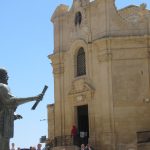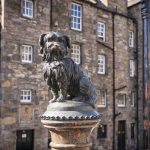Edinburgh is a city of two halves, the Old Town and the New Town. In this post, we visit the Old Town, or ‘Auld Reekie’ as the poet Robert Fergusson called it. There’s a little history, then visits to two museums and a pub which all help to tell the story. Thankfully, Daniel Defoe’s 18th century warning that when walking the streets at night you risk ‘having Chamber Pots of Ordure thrown upon your head’ no longer applies. Then, we bring you the story of the Old Town’s most infamous resident, Deacon Brodie, pious citizen by day, but at night, ‘a gambler and a thief, dissipated and licentious.’
a little history
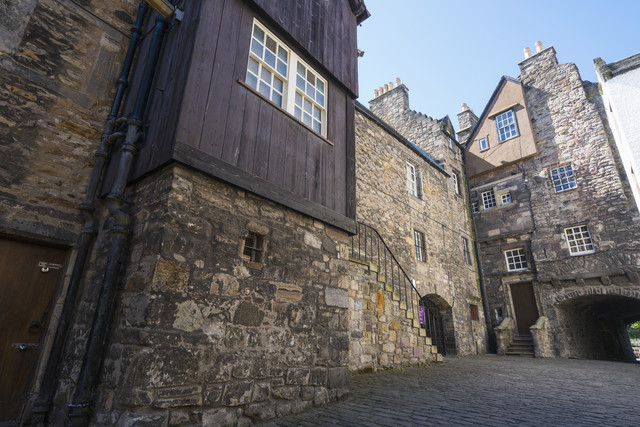

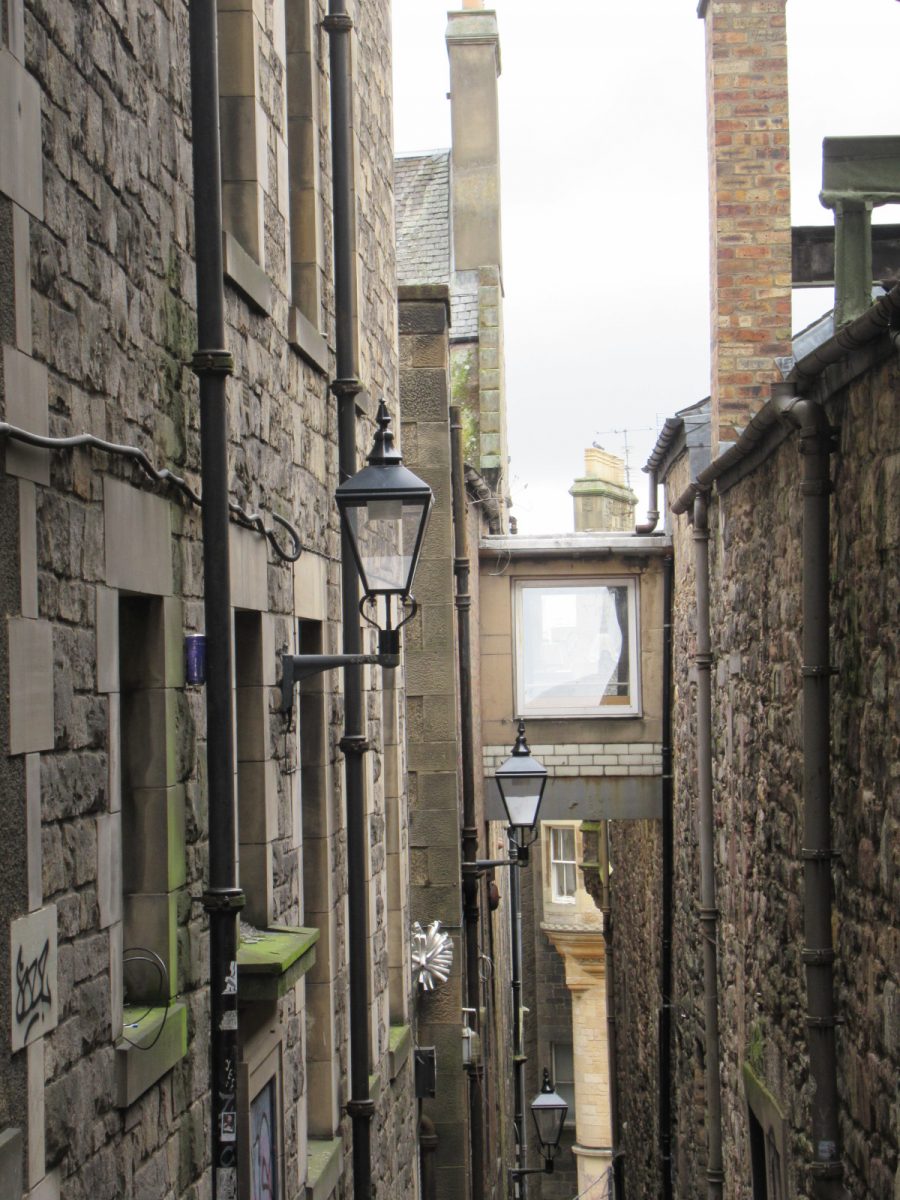
Edinburgh’s Old Town consisted of little alleys, or ‘closes’, built down the steep slopes on both sides of the Royal Mile. Buildings were high to make the most of the space and living conditions in these ‘dark alleys for dark deeds’ were insanitary to say the least. Water had to be fetched from taps in the street and slops were routinely thrown out of windows onto the heads of whoever happened to be passing. No wonder the poet Robert Fergusson called the city ‘Auld Reekie.’ The city was crowded: merchants and the professional classes lived and worked on the ground floor, the wealthy one floor up, the working class above them and the poor crowded into the attics and cellars.
In the 18th century everything changed. The New Town was built and the wealthy gradually moved there instead, pleased to leave the squalor behind and settle in the new wide streets and leafy squares. The Old Town suffered a number of disasters in the 19th century, notably the Great Fire of Edinburgh in 1824 and the dramatic collapse of a number of buildings at 99-107 High Street in 1861. 83 families lived in the 5 storeys of this building and many were killed. This was the spur for the Edinburgh City Improvement Act in 1867 and the gradual renovation of the city.
There is much more detail on these stories on the podcast. Two museums on the Royal Mile – The Real Mary King’s Close and Gladstone’s Land – give informative pictures of life in Edinburgh’s Old Town across the centuries.
the real mary king’s close


Here, an archaeological project begun in 2001 has revealed many layers of the history of this building and, by extension, a detailed picture of those who lived in the Old Town. Mary King, widowed in 1629 and left with 4 children, ran a fabric shop here and items listed in her will illustrate her life: ‘2 gold rings, 6 silver spoons, fire irons and 2 chamber pots’, along with spools of thread and some of the napkins and tablecloths she sewed. On other floors of the house when she was here lived a cross-section of society, including merchants, lawyers, a doctor, a tanner, some shoemakers and the Widow Ross.
In 1657, when the Lord Provost lived here, Mary Queen of Scots spent her last night in the city in the building, sleeping under guard to the shouts of an angry mob outside demanding that the authorities ‘burn her, for she is not fit to live’. The next day, she was taken to the castle at Loch Leven, where she remained a prisoner for almost a year before escaping by rowing across the lake dressed as a servant girl and fleeing to England.
The story of the plague which arrived in Edinburgh in 1644 – perhaps from the rats on the ships in Leith? – is told here too. During a terrifying 2-year period, between 20 and 50% of the city’s population died. Those infected were quarantined at home, having bread and ale delivered and perhaps being visited by the plague doctor, who wore a long pointed mask for protection. Parliament was closed and weddings and funerals were banned in ‘this tyme of common calamitie and public pestilence.’ After a death, cleaners would arrive, dressed in grey tunics decorated with the cross of St Andrew to fumigate the house by burning all its contents.
gladstone’s land
This tenement house, built in the early 17th century by Thomas Gladstone, is now run by the National Trust of Scotland and has different displays on each of its floors which illustrate the building’s long history. Gladstone lived here with his wife and 5 children, trading in foodstuffs and cloths and importing goods from many corners of the world, such as spices and rice from India, cloves from China and tobacco from South America. The family was wealthy and let out some of the upper floors to tenants.
On one floor is the draper’s shop run by an 18th century couple who stocked cloth and clothes and had a tea-table set up in one corner so wealthy customers could enjoy the ‘new’ drink and socialise while they shopped. One customer’s itemised bill included ‘silks, satins, lace, ribbons, stockings and mittens’. Further up, you can visit the reconstructed boarding house run here in the early 1900s by Mary Wilson. She advertised a ‘Room to suit 2-3 respectable men’ and you can see the beds and kitchen corner where they ate and slept. In 1933 the building was condemned as unfit for human habitation.
There are lots more stories on the podcast about others who lived in this building, a huge variety including candle-makers and bootmakers, a retired lieutenant who’d returned from the Napoleonic Wars, the couple who ran a ‘dram shop’ here in the 1860s and Jessie Mowat, who moved here on her marriage in 1899 and was later left a widow and mother of 7 children when her husband George was killed on the first day of the Battle of the Somme.
DEACON BRODIE
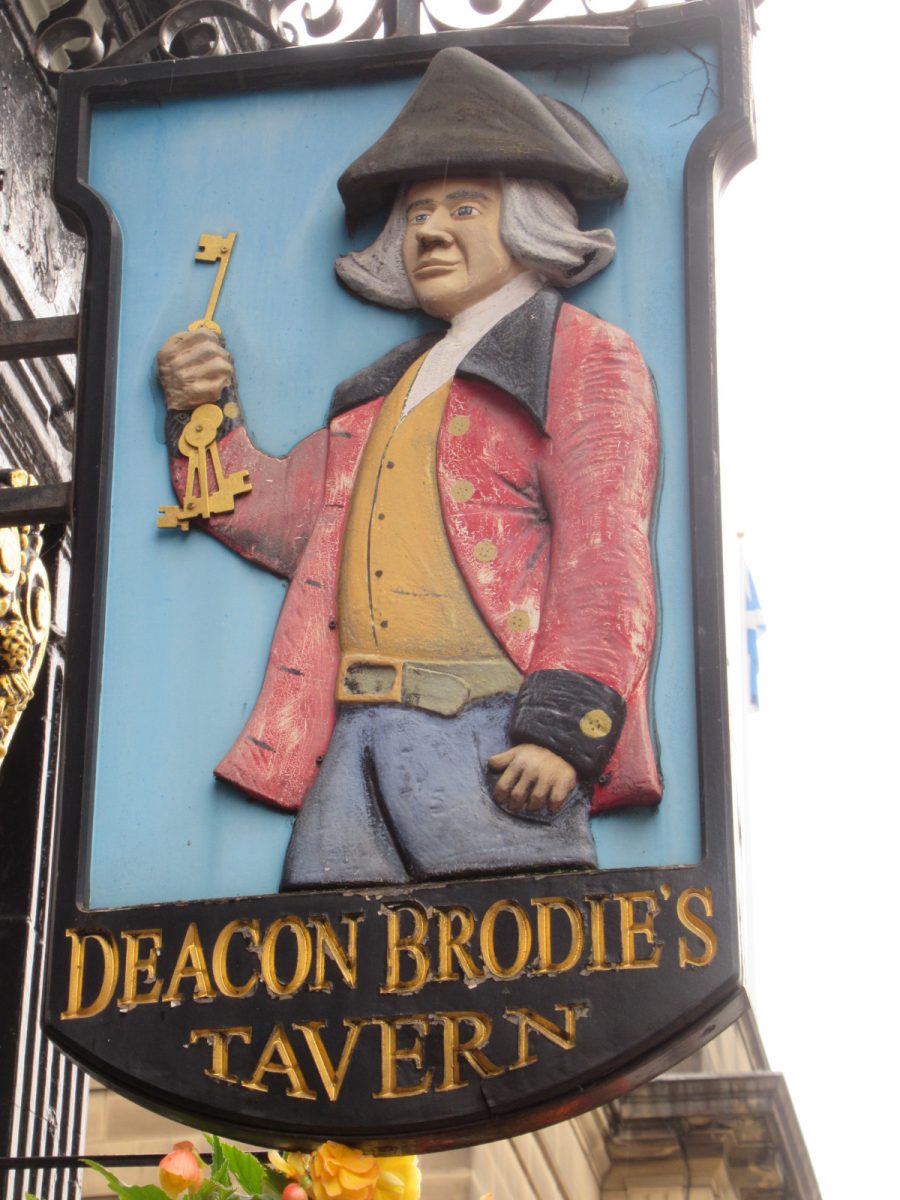
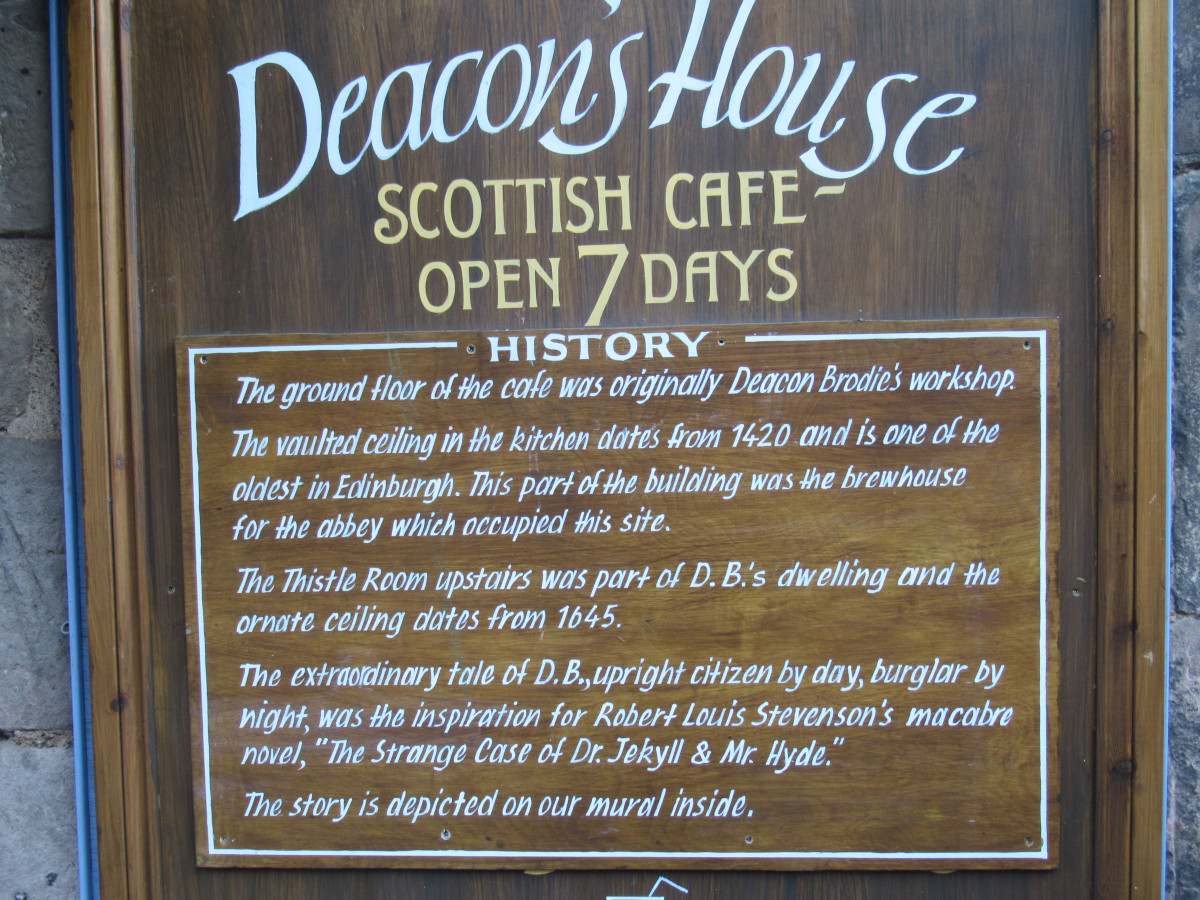
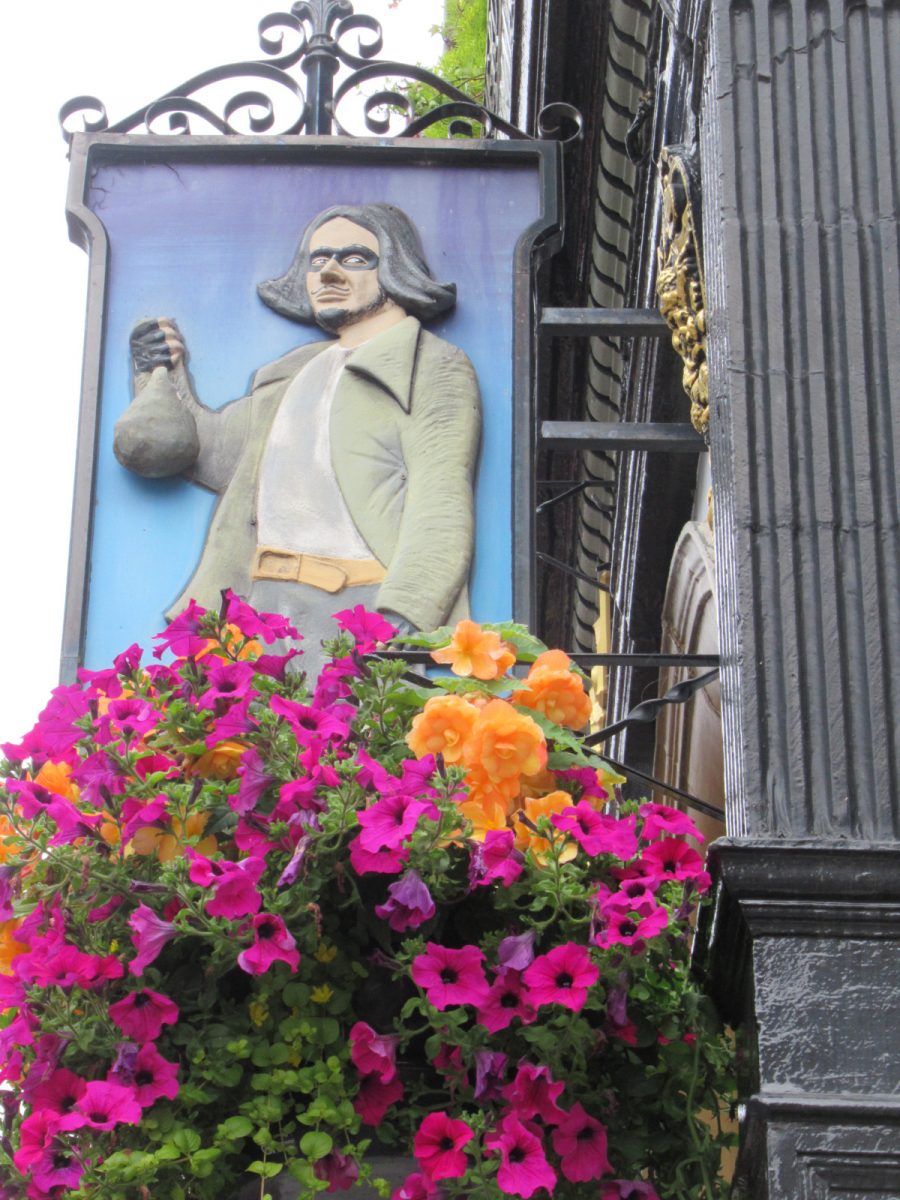
Deacon Brodie is Edinburgh’s most infamous citizen, a seemingly upstanding businessman by day, but a housebreaker and thief by night who was hanged for his crimes in 1788. The mystery thefts had been the talk of the city until he was eventually unmasked and caught attempting to run away to New York. He was brought back to Edinburgh for trial, sentenced to death and brought to the scaffold ‘in a full suit of black, his hair dressed and powdered’. His larger-than-life tale is said to have inspired Robert Louis Stevenson’s ‘The Strange Case of Dr Jekyll and Mr Hyde’ and he’s remembered today at Deacon Brodie’s Tavern on Lawnmarket, where the double-sided pub sign illustrates both sides of his character.
Listen to the POdcast
Reading SUGGESTIONS
A History of Edinburgh by Christopher McNab
Edinburgh, A History of the City by Michael Fry
The Man who was Jekyll and Hyde by Rick Wilson
LINKS FOR THIS POST
Walking Tours of Edinburgh’s Old Town
The Real Mary King’s Close
Gladstone’s Land
Deacon Brodie’s Tavern
Previous episode The Royal Mile
Next episode The Enlightenment and Edinburgh’s New Town
Last Updated on October 9, 2023 by Marian Jones


